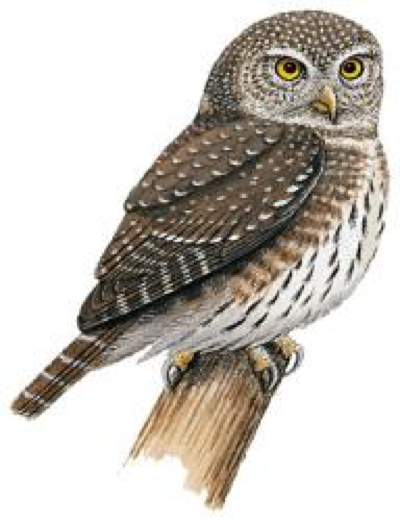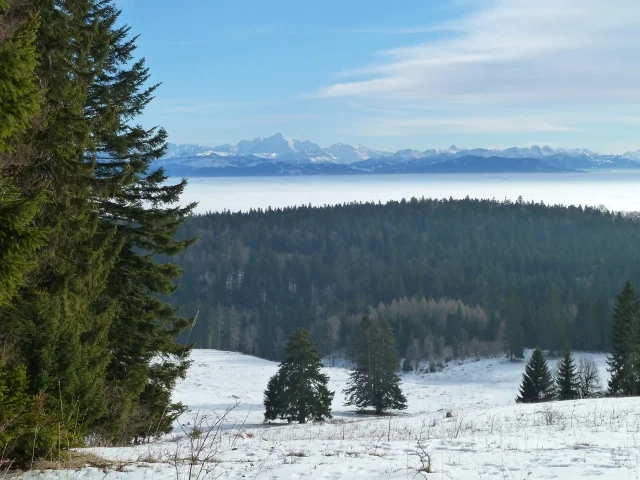END OF WINTER?
March 12th
It has been a very strange winter in Switzerland. Very heavy snow in November caught everyone off balance but since then relatively mild spells interspersed with cold but very dry weather means that the snow cover has been relatively thin and very icy. Recent days however seem to be signalling the end of it all.
Last summer I found a place in the Jura for Hazelhen (Bonasia bonasia) a very shy, fairly rare, high-altitude, forest grouse with a very thin high-pitched call. The literature says that they call very early in the breeding season and normally I cannot easily reach their habitat until the snow has melted and by then that is too late. But things are now happening to signal the end of winter, many birds are singing and a few buds appearing on the trees, so with less snow around I decided to see if I could get up into Hazelhen country.
I could not drive my car as high up as I had hoped, but I had my ambitions set and so I took off to hike the rest, I strapped ice spikes on my boots and decided to leave my snow shoes behind (error !) to save weight. It was a dull grey day, rather disappointing really, but the icy ground was firm and not too shiny so the going quite easy. My first reward was a Crossbill (Loxia curvirostra) (Bec-croisé) in song and a Raven (Corvus corax) (Grand corbeau) which passed overhead and gave me a couple of nice croaks and crackling noises:
Somewhat energised by that I climbed higher. The snow had melted on the slopes exposed to the sun, but in the shade and the hollows it was still deep with an ice crust that I frequently fell through - I regretted my snow-shoe error !
One of our first singers in the mountains is the Mistle Thrush (Turdus viscivorous) (Grive draine), usually from an exposed perch high in a tree its liquid notes flow and echo over the forest with others answering in the distance:
At the end of winter many first-year birds (ie those breeding for the first time) are still trying to get their full song right and often sing something called a "plastic" song, similar to sub-song but a bit stronger. Here is a Mistle Thrush that seems to sing a few warm-up phrases which may be either plastic or sub-song (how to tell?), before suddenly bursting out into full song after 28 seconds:
This is the time of year to set up territories and find a mate, so they also indulge in chases and fights giving out harsh scolding calls as they squabble over who is toughest, here are a bunch going at it when a Green Woodpecker (Picus viridis) (Pic vert) drops in and adds his voice with a "yaffle" call:
This all kept me well amused as I climbed higher through the snow, it was hard work and so as I reached my target area I was very happy to slow down and start listening more carefully. Not a trace of a Hazelhen anywhere unfortunately, but I was suddenly exhilarated to hear a relatively boring sound like a vehicle reversing alarm which I had only heard once before - the monotonous pooping sound of a Pygmy Owl (Glaucidium passerinum) (Chevêchette d'Europe). I had once got a distant recording of this bird along with some foxes, but now I had a chance to get closer. The bird was very mobile, perhaps flying around its newly claimed territory, but after 45 mins or so stalking around I was able to get close enough to make a recording I was happy with - the owl also attracted a Jay (Garrulus glandarius) (Geai) which came scolding close by (Pygmy Owls eat small birds) and scared it off, you can hear its squawking at the end:
Still no evidence of the Hazelhens, but the snow here was too deep and my legs too tired to do much more, so I set off back down to my car. On the way home I stopped at a small oak wood where I had left the Sony M10 out overnight to see what I could catch (mostly aircraft and motorbikes sadly), but walking in with the Telinga in hand I was pleased to find a Great Spotted Woodpecker (Dendrocopos major) (Pic épeiche) who had found himself a nice tenor drum:
In the background you can hear our other thrush - Song Thrush (Turdus philomelos) (Grive musiciene) singing its repeat phrases. However the tenor drummer created a stir with the competition, and what was probably another male flew in which resulted in a certain amount of shouting and chasing after which one bird settled down and started feeding whilst the other took up a deeper drum some distance away, you can hear the sequence:
So - singing, shouting, calling, chasing and drumming - they are all at it ! Winter is ending and spring will soon be in full swing, I love the seasons of transition, especially spring with all the promise it holds !





